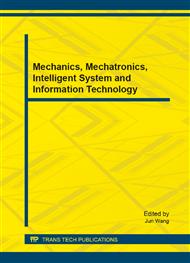p.279
p.283
p.287
p.291
p.296
p.302
p.307
p.312
p.316
An Inspection Method of SMD Component Type Based on Moment Features and BP Neural Network
Abstract:
The type inspection of surface mounted devices (SMD) components is an important part of the numerical control (NC) placement machine’s vision system. In order to improve the detection speed, accuracy rate and versatility, a detection method based on moment features and neural network is proposed. Firstly, component images are preprocessed in order to eliminate the influence of non-uniform illumination and simplify the calculation, so component lead images can be obtained, and then seven invariant moments and a zero-order Zernike moment of the lead images are extracted. Next, the moment features are corrected and normalized. Finally, back propagation (BP) neural network based on the Levenberg-Marquardt algorithm is taken as a classifier for training and testing the 8-dimensional mixed moment feature vectors, 0 and 1 are used to represent the degree of belonging of each image. The experimental results show that this method doesn’t need complex lighting system and has good versatility, and the correct rate can be up to 100%.
Info:
Periodical:
Pages:
296-301
Citation:
Online since:
August 2014
Authors:
Price:
Сopyright:
© 2014 Trans Tech Publications Ltd. All Rights Reserved
Share:
Citation:


